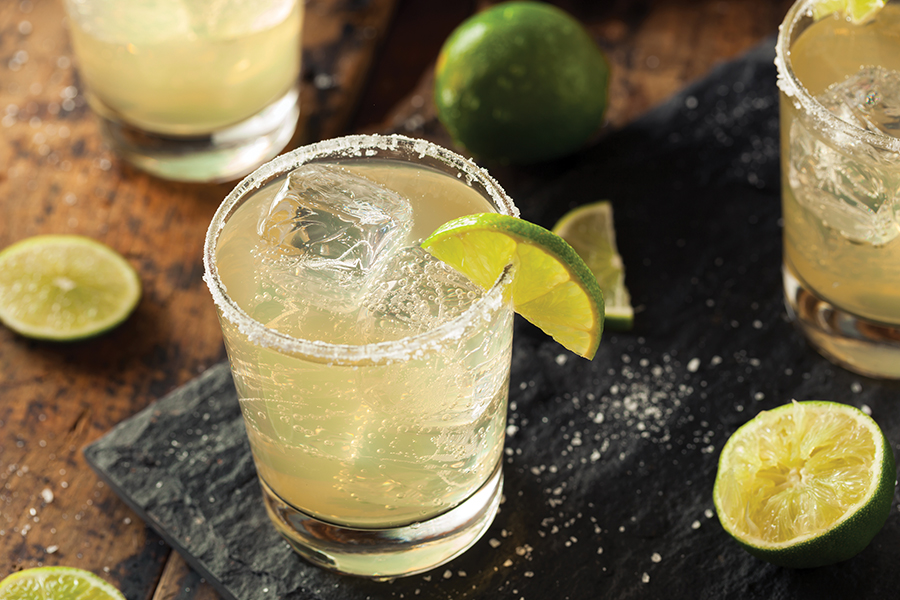In the world of spirits, none is more controversial and misunderstood than tequila.
By Matthew DeBord
HQ 102 | SUMMER 2018
Blame that Margarita, a delicious cocktail if mixed correctly — but an unmitigated horror if served the way a lot of folks are forced to experience it. Much of the time, if you order a Marg, you get cheap tequila plus a Margarita “mix,” which is essentially lime juice mixed with a lot of sugar. The final offense is a crust of salt stuck to the rim of the goblet the whole mess arrives in.
Don’t even get me started on the “frozen” Margarita, a tequila-and-limeade slushy that ought to be banned.
You’re not going to taste tequila in these dismal Margaritas, and you aren’t going to want to look yourself in the mirror after more than two of them. Which is a shame because a superb and regret-free Margarita is possible — and a whole world of tequila connoisseurship is available, if you agree to spend a little bit of extra money and reconsider the great spirit of Mexico as a sipping beverage, like scotch or bourbon.
To begin, you have to promise yourself that you will never again order a Marg at a bar — and you’ll avoid any combination of the words “tequila” and “shot.”
That ritual of (again) cheap rotgut tequila slammed in a gulp with a salted hand and suck of lime wedge is not helping you to be a better person.
I’m not against a Margarita every now and then, but I make them myself so I can control all the ingredients. When it comes to the south-of-the-border firewater itself, I treat it as a drink to be savored, in small amounts.
Obviously, this means investing some time in finding something better than José Cuervo white, which at about $16 a bottle will do in a pinch as a mixer but lacks much in the way of tequila character. Over the past decade, some high-end tequilas have hit the scene. Maybe you’ve heard of Patrón, or perhaps Casamigos, George Clooney’s brand that he and partner Rande Gerber recently sold for a billion eye-popping bucks to a big drinks company.
These are pricy tequilas, in the $40 and up range, and they’re just the tip of the tequila iceberg. As with any spirit that’s been around for ages, the more you explore, the more you find.
If you don’t want to do that, then I recommend checking out a newish brand, Espolòn. This is proper blue agave tequila, and it hails from the wellspring of the drink, Jalisco. It’s priced right; the “blanco” can be found for about $25 and it offers real tequila flavor. But Espolòn also produces the next-levels of tequila, reposado and añejo.
So let me explain how this all works. Tequila is made from the heart of the blue agave plant. It’s a complicated process. The harvested hearts have to be roasted, mashed, the juice fermented with yeast and then distilled. Blanco tequila is usually produced in column stills, not unlike vodka, but the reposados and añejos can be made in smaller pot stills before being aged in oak barrels.
You want plant flavor in your tequila — herbal, minty, peppery flavor. You don’t just want to taste an alcoholic burn. For this reason, a nice blanco plus fresh lime juice plus any orange liqueur that isn’t Triple Sec (I recommend Cointreau) plus a pinch of salt served stirred on the rocks with a lime wedge makes a satisfying Margarita that tastes like a cocktail, not tequila soda.
But what you really want to do is sip tequila.
For that, the resposados and añejos are what you should choose (resposados and añejos are darker in color). There’s a debate about whether you sip neat or add a bit of ice. I can go either way. In addition to the mixture of sweet and herbal, spicy and succulent, that tequila offers, the spirit has a lovely, oily texture. It doesn’t really need to be diluted to take the aromatic edge off the alcohol, like scotch or bourbon. But it’s also OK to add an ice cube or two, if you’d like to cut it somewhat.
Tequila is unique in that the flavors are extremely intricate and layered. Scotch and bourbon can be astounding one-trick ponies: massive blasts of smokiness or globs of caramel. But with tequila, you want to seriously sip. A little goes a very long way. If you typically drink two fingers of scotch, one finger of good tequila will suffice. You can always get a refill. But you want to prevent yourself from sipping too quickly.
Special stemmed tequila glasses are available, but I think a small juice glass, larger than a shot glass but smaller than a rocks glass, is ideal. There’s a ritual called “shaking” the tequila, where you cover the glass with your palm and literally shake the spirit before sniffing and sipping. But you can also simply swirl and sniff.
The upshot is that while scotch and bourbon are tastier during cooler seasons, tequila is off the desert and a fine after-dinner choice when it warm or even hot. And if you’ve never drunk it outside a Margarita, you owe it to your taste buds to make a change.





